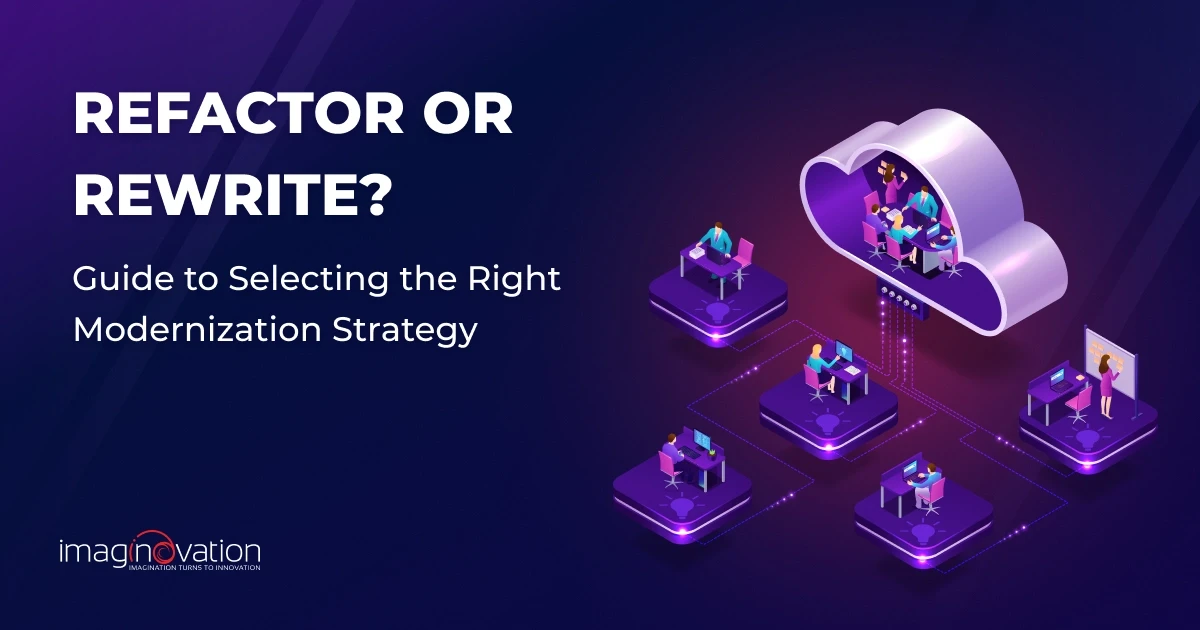Today, we are surrounded by a multitude of digital products, including web and mobile applications. There seems to be an app for nearly everything. However, many great product ideas and opportunities remain unrealized.
Developing a robust application and bringing it to market can be challenging. You may encounter pitfalls during the development phase, potentially leading to unnecessary time and resource investments.
Don’t worry. In this guide, we’ll discuss common challenges in digital product development and how to overcome them.
Let’s get started!
Common Pitfalls to Avoid When Developing and Launching a Digital Product
Below are some common mistakes to avoid when creating and launching software, web, or mobile applications.
Let’s explore each one, learn from them, and ensure your business doesn’t make the same mistakes.
1. Not Having A Clear Product Development Strategy

A well-defined product development strategy is crucial for the success of your product. Without it, your team may lack direction, leading to inefficiency and wasted resources. A vague or overly high-level strategy can leave your team questioning the relevance of their work.
Many companies make the mistake of shelving their strategies after presenting them, neglecting careful execution. This can result in following an aimless roadmap, depleting time and money. Additionally, investing in misaligned features and technologies can further hinder progress.
SOLUTION
Your strategy should clearly communicate focus areas and success paths, empowering your team to prioritize effectively.
When developing your roadmap or strategy, ensure it includes the following:
- Vision: Define both long-term and short-term product goals.
- Challenge: Explain the problem your product aims to solve.
- Outcome: Clarify the objectives you aim to achieve by addressing these issues.
- Actions: Outline critical steps toward finding solutions.
- Measure: Identify KPIs for tracking progress.
A clear strategic plan will help you make better decisions and stay focused on your goals. Communicate this plan throughout the company and ensure it's accessible to everyone.
Be realistic with your product's features—prioritize high-value activities over unnecessary additions. A detailed roadmap will guide decisions, reduce mistakes, and help your product reach the market efficiently.
2. Unclear Product Definition

Continuing from the previous discussion, having a poor product definition is a critical pitfall to avoid.
A poorly defined product is a common issue in product development, often leading to confusion and chaos during the app development process.
In many cases, the development team is unclear on what to build, while product managers lack precise product requirements. The research conducted during the strategy and planning phase is essential here.
SOLUTION
Ensure that your product definition answers the following questions:
- Why are we building this?
- How will it work?
- What will it look like?
- How will we measure success?
- Who will use it?
- When should we launch it?
Identify your customer segments and, if possible, gather direct feedback from them. Integrate these insights into the development team's work, involving all team members—not just the marketing team.
Next, transform the feedback into clear, defined requirements.
Review and prioritize the list of "must-have" features and requirements as part of your product definition.
Also Read: Product Development Strategy 101: Defining Your Product Vision and Roadmap
3. Project Oversights – Failing to Add Value & Slowing Down Decision-Making

Having too many or too few reviews during app development is a common mistake.
Excessive reviews can lead to micromanagement, demotivating the team, and detailed reviews that add little value. Conversely, monitoring progress too superficially without regular interaction can cause the team to lose direction and slow decision-making, leading to costly delays.
A balanced approach is essential, and you need to be present.
SOLUTION
Review progress, especially for significant investments or major releases, but avoid overdoing it. Establish logical checkpoints with key parameters like features, quality, timeline, and cost. If the team is on track, step back. If they foresee issues, they should escalate them and propose solutions for agreement.
4. Too Many Stakeholders

The saying, "too many cooks spoil the broth," aptly applies to digital product development. Having too many stakeholders can create significant obstacles and frustration for everyone involved.
Often, a project manager is appointed with a budget and objectives, but approval from a committee at various stages can lead to delays, especially when previous decisions are overridden.
SOLUTION
To manage too many stakeholders:
- Create a small team as a single point of contact.
- Ensure this team can make strategic decisions efficiently.
- Limit the number and scope of stakeholders.
- Involve stakeholders early to set clear project expectations.
5. Not Researching Your Niche

Focusing on your niche is crucial. Choosing a niche allows you to concentrate efforts on a specific area of expertise and connect with a targeted, interested audience. It also helps attract niche-specific advertisers, sponsors, and influencers, giving you a clearer direction for marketing and selling your product.
As a digital product owner, decisions regarding product development, pricing, and marketing depend heavily on your niche. To avoid guessing, ensure you understand your niche by answering key questions about needs, saturation, competitors, trends, and more.
SOLUTION
Research competitors, monitor trends, and assess your market thoroughly to determine niche profitability.
6. Overcomplicating the List of Product Features

Remember, most successful apps are not the ones that have several features. The products that focus on solving key pain points of the users do great in the market.
Adding more functionalities only increases the expenses and timeline of your project. It also becomes more difficult for users to easily understand and adapt to the app.
SOLUTION
Focus on streamlining and refining your app/product to make it as simple as possible without compromising on the app’s basic functionality.
Your goal should be to deliver a message and solve a problem, not to amaze or astonish your users with extra features. To get clarity, you can jot down all the features that you want to see in the app. Now, create two separate lists – Only Essential Features and Nice-to-Have Features.
This exercise will give you a better picture and a clear idea as to which features should you really add to the app and which ones you can skip for now.
Remember, no app is perfect in its first launch. You can always add more features to the app based on your customers’ feedback.
7. Under-Resourced Projects Leading to Functional Bottlenecks

Under-resourcing is considered a primary reason for project failure. The approach to resource a project varies. While some companies base it on the company’s structure, others rely on the client and the type of contract.
Under-resourcing of projects could happen due to a lack of qualified resources or lack of planning and scheduling. Whatever may be the reasons, it generally leads to functional bottlenecks.
Both quality and efficiency will fall in an under-resourced project.
SOLUTION
Below are the important steps you can take to avoid these bottlenecks.
- Make sure you have hired an adequately skilled team
- A project owner should not own more than two projects at a time
To avoid a resource shortage, monitor your project resources throughout the project by:
- Tracking the resource availability
- Managing and tracking workload allocation
- Monitoring the project schedules
8. Poorly Defined Roles and Responsibilities

The basic question that every product owner must answer in the development phase is – who does what?
Not many can answer this with conviction. Sometimes, even the teams aren’t clear about who is responsible for which deliverable.
When more than one person assumes that they are responsible for a specific thing, it leads to redundant work and confusion.
At times roles are not communicated to the functional groups.
SOLUTION
Make sure you hire a project manager so he knows all the ins and outs of your project. In addition, you can also:
- Define and document the roles and responsibilities of all at the beginning of the project.
- Divide broader tasks into smaller, bite-sized activities.
- Have one and only one person who is directly responsible for a deliverable.
9. Ignoring Pre-Launch Marketing

When it comes to app marketing, it can be crucial to create a pre-launch buzz.
Have you given enough thought about marketing your app before it is ready for launch? Or, do you have a robust marketing plan in place?
If you’re already in the development phase of the product and you still don’t have a marketing plan, it will create troubles when you launch the product.
It’s a popular misconception that a great product will market itself. Well, it’s not completely true. There’s fierce competition in the mobile app world, just to grab an extra few minutes of attention from the users.
Therefore, to ensure your app gets enough attention, you need a powerful marketing plan that will cover both pre-launch and post-launch initiatives.
SOLUTION
You don’t have to start spending big on advertising before even the product is launched. Start early and create a buzz with the help of social media and email marketing.
You can use your social media network to get the word out. Then gradually build connections with the influencers in your niche to help you spread the word.
10. Focusing on Technology Instead of the Product

Yes, even though the underlying technology will play a crucial role in a product’s success, you don’t have to put too much focus on it as a product owner.
Instead, you need to focus on the end product, whether it is feasible or not, and the overall experience it gives to the users. Customer experience is one of the critical KPIs, so make sure your app provides a great customer experience.
SOLUTION
So, how to ensure your product offers an incredible customer experience? The main criteria should be what type of users it points towards, which ones it does not target, what problem this product resolves, and which ones it does not.
Here are the questions that you need to answer:
- Can you use the app without any issues?
- Does it cater to your needs?
- Can you easily find the feature that you’re looking for?
- Does the app provide some value to your life?
- Can you trust it?
- Is it accessible to you?
Do remember, that technology is a tool, not an end. The end is the product in the making. The technology that is used is simply a tool to build your product. Although it is essential, focusing on what tool to use and not focusing on what you want to develop will lead to failure.
Partner with Imaginovation for Successful Product Development and Launch
How do you avoid all these challenges and develop a successful digital product?
Begin with a clear strategy and product definition—conduct thorough user and niche. And, most importantly, find a reliable app development company such as Imaginovation that can turn your vision into a successful digital reality. If you need any help with your digital product development, get in touch with us.
Imaginovation is an award-winning web and mobile app development company with vast experience in crafting remarkable digital success stories for diverse companies.
Let’s talk.
Ready to build an app, but not sure where to start?
We've got you covered. Click the button below to get started.





